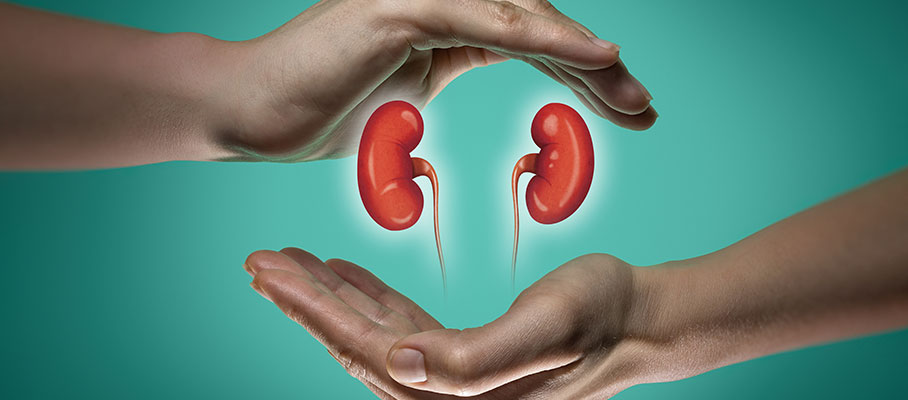2) This #accredited #tweetorial series on #kidneydisease #aCKD is supported by an independent educational grant from GSK plc and is intended for healthcare providers.
— @CKD_ce (@ckd_ce) October 12, 2022
4) Richard Bright (1789-1858) is credited for the first clinical description of the common complication accompanying kidney failure, #anemia, describing its outward appearance as “……the healthy colour of the countenance fades” pic.twitter.com/2SJR95nBQn
— @CKD_ce (@ckd_ce) October 12, 2022
6) Prior to the introduction of recombinant #erythropoietin (#EPO) to treat #aCKD, physicians relied upon blood transfusions resulting in many complications
— @CKD_ce (@ckd_ce) October 12, 2022
-Hemosiderosis
-Porphyria cutanea tarda
-Infections
-Fluid overload
-Transfusion reactions
🔓 https://t.co/NI7LK1Z3DC
8) As of 2017, some 700 million people worldwide & 38 million in the US (approx. 12% of the population) were estimated to have #CKD pic.twitter.com/FhwuJIYqcv
— @CKD_ce (@ckd_ce) October 12, 2022
10) Only 23% of #CKD patients with #anemia report being treated for it 🔓 https://t.co/RvLjjqo6Q5 pic.twitter.com/9PBw80yJ85
— @CKD_ce (@ckd_ce) October 12, 2022
12) Furthermore, #aCKD is associated with greater mortality, hospitalization, #MACE, and #CKD progression in dialysis-dependent and non-dialysis dependent CKD populations with increasing risk with severity of anemia. 🔓 https://t.co/vR38a8pKRV pic.twitter.com/VdClGj1Xro
— @CKD_ce (@ckd_ce) October 12, 2022
13b) The answer is: all of the above!! See 🔓 https://t.co/N5gBHkivz2 pic.twitter.com/m6B8JtizfT
— @CKD_ce (@ckd_ce) October 12, 2022
15) In #aCKD, we have both absolute and functional iron deficiency…. But what’s the difference?? Let’s start with some definitions! pic.twitter.com/CkFj6Lf3NP
— @CKD_ce (@ckd_ce) October 12, 2022
17) Functional iron deficiency is defined by adequate iron stores but insufficient iron availability for incorporation into RBC production, aka cellular iron sequestration. pic.twitter.com/kYBZ4xlCzh
— @CKD_ce (@ckd_ce) October 12, 2022
19) #Hepcidin, released from the liver in response to an iron load or–with #CKD, systemic #INFLAMMATION–predominantly contributes to functional iron deficiency (and also plays a minor role in absolute iron deficiency by inhibiting gut absorption).
— @CKD_ce (@ckd_ce) October 12, 2022
See 🔓 https://t.co/GFXXBC29Nt pic.twitter.com/uO6IT0McRI
21) What is the survival benefit of the hepcidin pathway? Show us what you know!
— @CKD_ce (@ckd_ce) October 12, 2022
a. increases circulating iron for RBC production
b. senses low oxygen states
c. prevents iron overload and limit iron availability for pathogens
23) In addition to increased hepcidin production, we also see decreased renal clearance in advanced CKD.
— @CKD_ce (@ckd_ce) October 12, 2022
🔓 https://t.co/N5gBHk1sx2 pic.twitter.com/NoKkmDvNI8
25) #Erythropoiesis is the process of producing RBCs, stimulated by low O2 sensed by the kidneys, which produce #EPO, thereby stimulating RBC production by the bone marrow.
— @CKD_ce (@ckd_ce) October 12, 2022
🔓 https://t.co/RrkqGDLVPy pic.twitter.com/CPRjVdSE55
27) To understand erythropoietin production in #CKD, one must first understand its function in a healthy kidney. In #normoxia, oxygen-sensing renal erythropoietin producing cells (#REP) located in the cortex and outer medulla are typically dormant. #Infographic by @Sophia_kidney pic.twitter.com/tjmAuQlbtu
— @CKD_ce (@ckd_ce) October 12, 2022
29a) In #CKD, there is reduced kidney parenchymal volume & blood flow. Many REP cells are replaced by fibroblasts and fibrosis. Renal tissue maintains a normal oxygen gradient by decreasing its oxygen consumption . . . pic.twitter.com/tNE24gqSry
— @CKD_ce (@ckd_ce) October 12, 2022
30) So, what senses hypoxia, thereby inducing the erythropoietic response?
— @CKD_ce (@ckd_ce) October 12, 2022
a. HIF pathway
b. hepcidin-ferroportin interaction
c. oxygen receptors in the alveoli indirectly activate REP cells in the kidney
32) Activation of the #HIF pathway induces a systemic response to hypoxia altering hematopoietic, respiratory, cardiovascular and metabolic physiology in an effort to restore oxygenation. 🔓 https://t.co/PbN9C4e6iL
— @CKD_ce (@ckd_ce) October 12, 2022
34) Today, we focus on the production of #EPO by the kidneys in health and CKD through HIF activation. However, to understand how the #HIF pathway is activated in hypoxia, we must first understand the HIF pathway during normoxia.
— @CKD_ce (@ckd_ce) October 12, 2022
36) In hypoxia, there’s no stimulus for hydroxylation. The HIF-α subunit is NOT degraded & freely translocates to the nucleus, binds with HIF-β subunit & activates the transcription of hypoxia responsive genes like EPO. Aka #HIF pathway activation. pic.twitter.com/W933o3u4NV
— @CKD_ce (@ckd_ce) October 12, 2022
38) There you have it, mechanisms of #aCKD! Thanks for tuning in! Please go pick up your 0.5h CE/#CME certificate at https://t.co/V26KfNPdIM & FOLLOW us for more on this topic, including an upcoming new #tweetorial from @edgarvlermamd. I am @sophia_kidney.#FOAMed @MedTweetorials
— @CKD_ce (@ckd_ce) October 12, 2022
